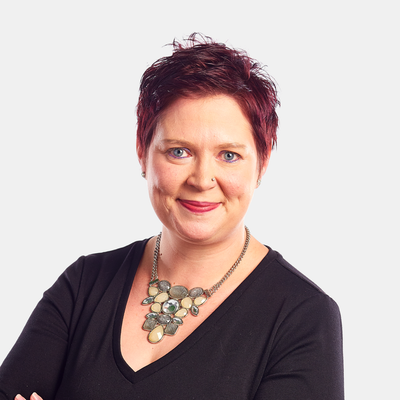Making the business case for sustainable supply chainsMaking the business case for sustainable supply chains
WGB talked with Andy Harig, vice president of tax, trade, sustainability and policy development at FMI – The Food Industry Association, about how food retailers can develop responsible sourcing practices—before it’s too late.

Creating a sustainable supply chain is good for the planet, to be sure. But setting and achieving sustainable sourcing goals is becoming increasingly important for food retailers and suppliers amid looming climate change pressures and the demands of savvy consumers.
Andy Harig, vice president of tax, trade, sustainability and policy development at FMI – The Food Industry Association, talked with Winsight Grocery Business Editor-in-Chief Heather Lalley about the business case for developing a sustainable supply chain and the challenges it presents.
The interview has been condensed and edited for clarity.
WGB: How do you make the business case for developing a sustainable supply chain?
HARIG: This is becoming more and more of an economic imperative. And it’s really four factors that are driving it. One is the supply chain disruptions were seeing that, in some cases, are tied to climate change, in some cases are tied to transportation and infrastructure challenges. These disruptions are imposing costs on the system, right? So, you really need to be able to build flexible mobile supply chains that can help you adapt as these impacts are felt. Second is, I would say, consumer expectations. Consumers expect that retailers and CPG companies are going to create supply chains that reflect their values. So, that’s a broad spectrum that includes things like environment, that includes things like labor relations, that includes things like animal welfare. And there’s a real opportunity there for retailers and CPG companies to build consumer loyalty through that. The third factor, I would say, is probably government and government mandates. And that’s local, state and federal, so all three of those factors, where you see governments are regulating. So, companies are trying to get ahead of those curves. And then the final one is sort of the miscellaneous group, the final driving factor, finance things like investors, insurance companies and NGOs that are sort of pushing this issue as well. If you go into the capital markets and want to raise money for your company, more and more, the people who are looking to invest are saying, what are your policies? How can I feel confident that you’re ready to deal with the kinds of bumps and challenges that are going to come through the supply chain?
WGB: You mentioned transparency. Do you have any thoughts on the best practices around explaining this to consumers? These are complicated, multifaceted issues.
HARIG: It gets really challenging because what’s important to consumers might vary from product to product. And it might also vary from, say, retailer to retailer. So, there might be retailers who serve communities where something like animal welfare is more important or more top of mind in terms of driving buying decisions than it is for other communities. Companies are going to have to understand their consumer base and adapt to it. What we have seen is consumers really reward and trust companies that are making an effort. There’s probably going to be times when companies don’t get it right. But consumers sort of appreciate that they are trying to get it right. You can’t wait until there’s a crisis to start this communication. I always say, ‘Trust is equity that you draw down in time of crisis.’ You need to be building that trust all along by being open.
WGB: Do you have any advice for food retailers when it comes to outlining ESG goals?
HARIG: I think that is one of the most challenging aspects because there is, I think, some pressure out there for people to swing for the fences and really set really big goals. And that can be really challenging. So, I do think you need to really take a hard look at your operation, and really make sure you’re engaging all the aspects of your internal operations, and then also have these consultations with your suppliers to understand what’s doable. Understand how you’re going to measure, make sure you’re reporting on it regularly. Understanding where the infrastructure is and where you might need to put capital. On some areas, like carbon emissions, there are science-based goals, there are different groups you can turn to to help you set those goals. You need to make sure the group you’re working with fits you and your company and understands your goals.
WGB: If I talk to you in five or 10 years about sustainable supply chains, do you foresee any huge changes?
HARIG: This is an issue that’s going to become more prominent and it’s going to become more important. It’s almost going to go from a situation now where there’s a business imperative; it’s important to get to done. But companies have a lot of flexibility because consumers are still developing their expectations. The regulatory environments are still developing. So people, I think, can still get ahead of the curve. Five years from now, 10 years from now, that’s going to be much tougher … We’re going to continue to see these really difficult climate situations that we’re going to have to adapt to. The second thing I would say is I think that technology will revolutionize a lot of this, but it’s not going to be one technology to address this. The really exciting thing that we’re seeing is there’s just so many entrepreneurs out there, particularly young entrepreneurs, that are actually thinking about these technologies. If you look at these sustainable supply chains, particularly in the food sector, it is just as dynamic and exciting as just about any other economic sector out there. If you came from 1950 to the year 2000, you would recognize the food industry if you were a grocer. If you came from 2000 to the year 2030, I think there’s going to be things that are going to blow your mind. It feels like science fiction. It’s really exciting, and that’s going to be good for consumers. It’s going to be good for companies. It’s going to be good for suppliers and it’s going to be good for the planet overall.
WGB: When you talk to retailers about this, what stresses them out? What are they most confused or concerned about?
HARIG: One is going to be just getting good metrics and good science-based goals in place. There are still a lot of competing visions and competing definitions of different aspects around sustainability that need to me addressed. Getting a consensus around what we should be doing is really challenging. How do you start to measure this and really put the dollar value to it and say, Yes, this was worth the investment? That I think is one of the things that’s really challenging, particularly in industries with very low profit margins.
About the Author
You May Also Like



.webp?width=300&auto=webp&quality=80&disable=upscale)


